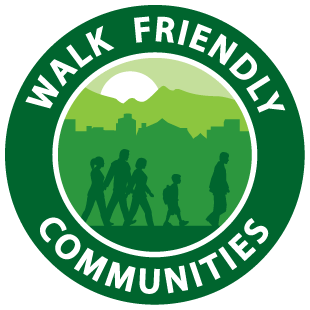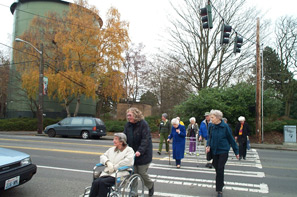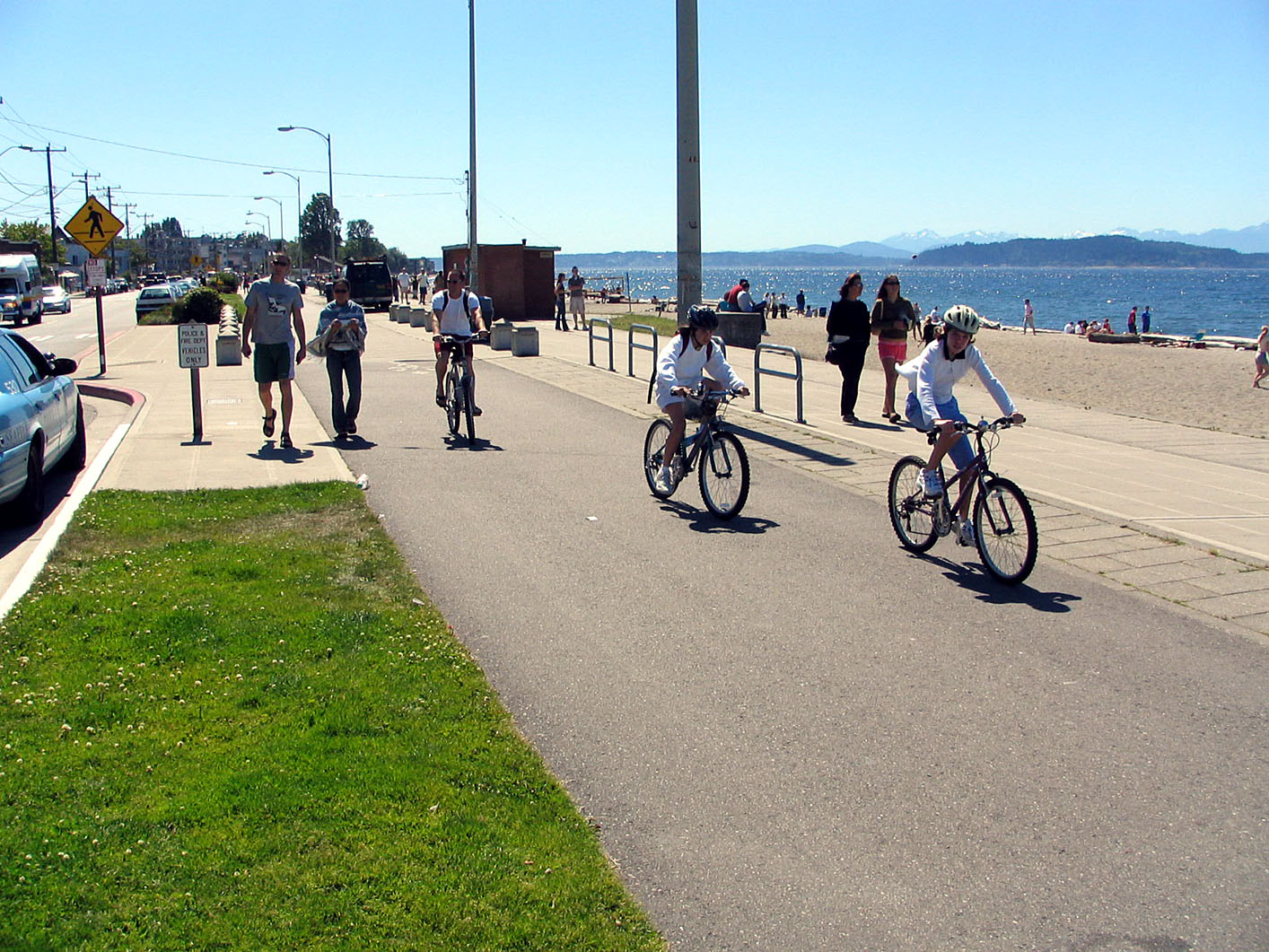Seattle is designated as a Platinum-level community due to top-notch planning and engineering, outstanding outreach and education, and strong enforcement and evaluation practices. Highlights of Seattle’s application include:
- Seattle is a leading example of positive evaluation practices. The Downtown Seattle Association started collecting pedestrian counts in 2006 and in 2011 the Seattle DOT (SDOT) began participating in the National Bicycle and Pedestrian Documentation project, counting at nearly 50 locations citywide multiple times per year. SDOT is now using automatic counters to collect continuous volume data at four multi-use path locations.
- The web-based Pedestrian Master Plan establishes clear goals and performance indicators. These indicators fit into the four main goals of the plan: Safety, Equity, Vibrancy, and Health. Examples include reaching ten new schools a year with outreach and increasing pedestrian volumes in selected count locations.
- One of the many great initiatives to emerge from Seattle’s Vision Zero effort is a rule for Pedestrian Mobility In and Around Work Zones, which outlines requirements for developers and contractors whose work impacts the public right of way.
- Seattle has installed speed enforcement cameras at 14 schools. While the cameras are primarily installed to increase safety by lowering speeds, they also generate revenue, which is dedicated to improving safety around schools and supporting safety education and encouragement for students. For more information about SRTS programming, check out the 2015 Safe Routes, Healthy Schools and Communities plan.
- Seattle has combined the best elements of their longstanding Open Streets events, Summer Streets and Bicycle Sundays, for a new program called Seattle Summer Parkways. This program will highlight the city’s growing network of neighborhood greenways and includes three events in three different neighborhoods.
- In 2007 the City Council adopted a Complete Streets Ordinance, which directs SDOT to design streets for pedestrians, bicyclists, transit riders, and persons of all abilities, while promoting safe operation for all users, including freight. This is the lens through which SDOT views its major maintenance and construction projects. All SDOT capital projects are required to conduct a Complete Streets review and document the results.
- Seattle’s Traffic Calming Program works to lower vehicular speeds on arterial and non-arterial streets. Since the 1970s, this program has installed thousands of traffic calming devices such as speed humps, chicanes, speed cushions, traffic circles, and radar speed signs. In 2015, the city started reviewing and reducing arterial speed limits through the Vision Zero initiative. Using guidance from FHWA’s US Limits 2, Seattle will lower speed limits on 10 arterial corridors and the entire central business district in 2016. The city is also lowering speed limits on residential streets, starting with areas that have been selected based on collision data.
- Managing parking is one of the keys to promoting a safe and enjoyable pedestrian environment. Beginning in 1986, Seattle abolished parking minimum standards for the downtown, opting instead to implement a 1 space per 1,000 square feet of non-residential development. The city also provides incentives for large development programs, including parking cash out, shared parking, and park-and-ride.



